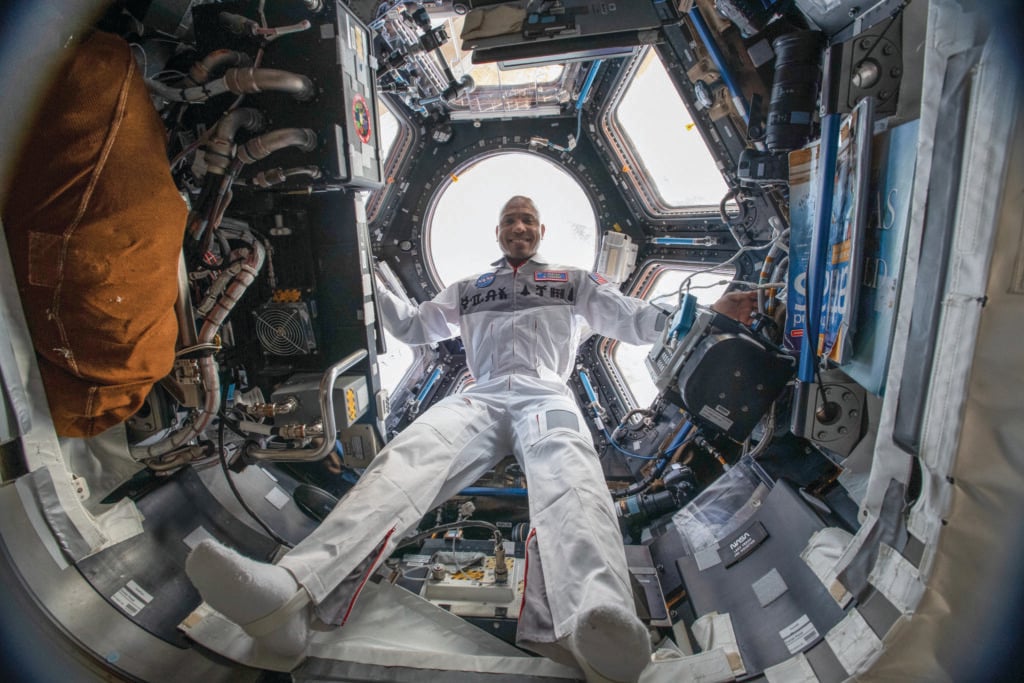
Christian astronaut — and his communion cups — lifting off on space mission
Online worship during the COVID-19 pandemic has helped prepare Victor…
| Refresh | This website christianchronicle.org/for-this-abilene-christian-university-alum-the-stars-are-singing/ is currently offline. Cloudflare's Always Online™ shows a snapshot of this web page from the Internet Archive's Wayback Machine. To check for the live version, click Refresh. |
Gleaming stars. Swirling galaxies. Streaking lights.
The first images from NASA’s James Webb Space Telescope released July 12 revealed segments of God’s beautiful universe never seen before. The whole world is now seeing clearer pictures of the Carina Nebula, Stephan’s Quintet, Southern Ring Nebula, and galaxy cluster SMACS 0723.

Scott Acton
And Scott Acton, a 1984 graduate of Abilene Christian University, which is associated with Churches of Christ, helped develop the tool to make it all possible. After completing his physics degree at the West Texas university, Acton earned a Ph.D. at Texas Tech University in Lubbock before beginning his career in the aerospace industry.
Acton, 60, a scientist at Ball Aerospace & Technologies Corp. in Boulder, Colo., served as the wavefront sensing and controls scientist on the James Webb telescope project for what turned out to be an almost 24-year endeavor.
Acton’s journey to participate in the project began years earlier in Hawaii when he was working for Keck Observatory on the Big Island, where his family lived for six years. On the side, he was working as a contractor for aerospace companies Lockheed Martin and Raytheon Technologies, who were among other companies submitting proposals to build a telescope for NASA.
Acton said he believed Aerospace would win the competition for the contract, and because he wanted to participate in the telescope’s construction, the scientist applied to work for the company and moved to Boulder in 2001. He joined a team assigned to work on the telescope’s optics.
Northrop Grumman Corp., an American multinational aerospace and defense technology company, served as the primary contractor for NASA’s mission, leading the industry team.

Left, the galaxy cluster SMACS 0723. Right, Stephan’s Quintet, a visual grouping of five galaxies best known for being prominently featured in the holiday classic film, “It’s a Wonderful Life.”
The telescope was launched on Dec. 25, 2021, from Kourou, French Guiana, and it is designed to have a mission lifetime that could reach two decades.
Regardless of a person’s beliefs, Acton believes the images from the James Webb telescope will be a spiritual experience:
“Seeing these images will increase your faith. It will increase your faith in whatever you have faith in, but it will absolutely increase it.”
Related: Christian astronaut — and his communion cups — lifting off on space mission
Acton said everyone has their own emotional moment when working on groundbreaking projects. He clearly remembers his own.
This past February, his team received a throwaway image from one of the telescope’s fine guidance sensors and placed it on some infrared detectors, downloading the photo after about a 40-second exposure. What he saw brought him to tears.

Two cameras aboard Webb captured the latest image of this planetary nebula, cataloged as NGC 3132, and known informally as the Southern Ring Nebula. It is approximately 2,500 light-years away.
“When you stretch the contrast in that image, I realized that single image contained probably 500 galaxies that had never been seen before,” Acton said.
Any one of those galaxies could contain 100-200 billion stars, he explained, and those stars could have planets in a habitable zone, and those planets could harbor life.
Acton walked back to his apartment around midnight talking to his wife about what he had witnessed.
At the time he remembered a Scripture about stars singing (Job 38:7), and when he imagined all those galaxies, “I pictured them singing,” the scientist recalled.
“Not in any kind of a language that people could understand, but certainly the emotion we can understand. I would call that emotion, joy,” Acton said. “It’s almost like the galaxies or the universe was happy that after all this time we could finally see them.”
Subscribe today to receive more inspiring articles like this one delivered straight to your inbox twice a month.
Your donation helps us not only keep our quality of journalism high, but helps us continue to reach more people in the Churches of Christ community.